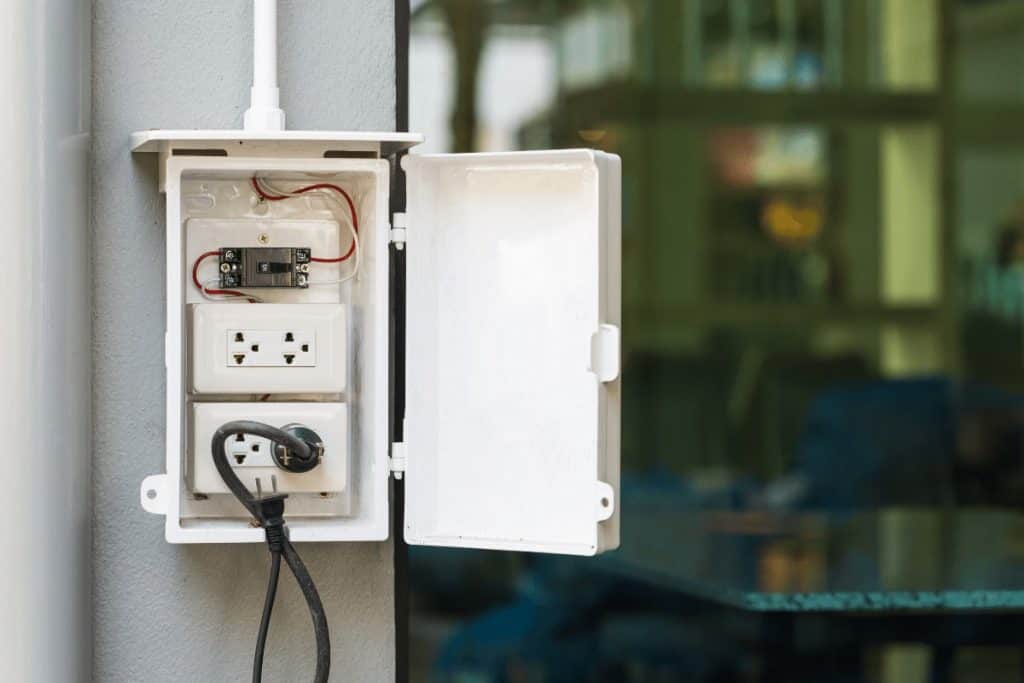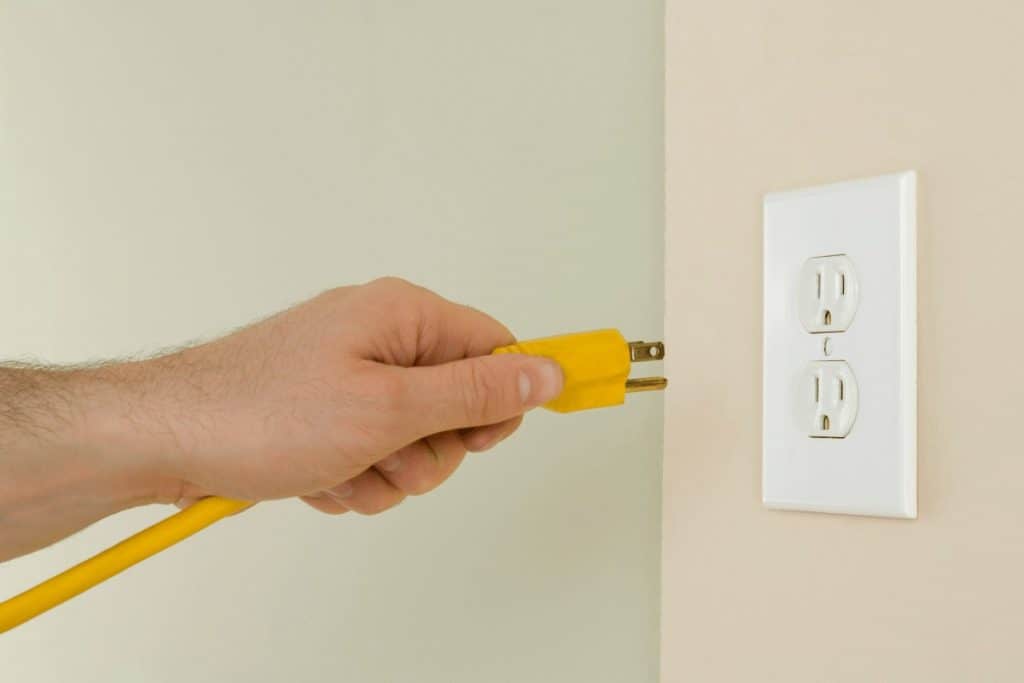You’re likely starting with framing and electrical if you are tackling your first home renovation project.
The next step would be the drywall, and you may find yourself wondering if you install electrical boxes before or after drywall.
It is a common question among DIYers tackling home projects and wondering which is most efficient.
Install your electrical boxes before drywall. Electrical boxes are typically installed onto studs and joints before drywall is installed for greater stability. It’s essential to take the width of the drywall to make sure the boxes are flush with the drywall once it is installed.
While it depends on the application and specific project, it is generally better to wait for drywall installed after adding wall boxes.
Electrical work requires many codes and inspections, so consult your local regulations when tackling a home renovation project.

Table of Contents
Is It Better To Install Electrical Boxes Before Or After Drywall?
It is best to install electrical boxes for most general applications before the drywall is done.
Electrical boxes are installed on the studs and joints to ensure they stay stable for a long time.
This is significantly easier to do before the drywall is installed.
Depending on your location and local regulations, you’ll need to inspect the wiring and electrical work before installing the drywall.
Having wires behind drywall doesn’t allow inspectors to see the electrical work.
If you need to run any new wires or change anything, your electrical work won’t be covered up by drywall.
Ensuring you follow all the steps correctly for electrical work is very important.
It is crucial to make sure your electrical boxes end up flush with the drywall to allow for the safe operation of electrical devices.
Many electrical boxes on the market have built-in depth gauges to ensure they end up at the recommended level.
It is also essential to seek the work of a professional.
Improperly done electrical wiring is a leading cause of house fires.
Electrical work and rough wiring require adhering to extensive codes and regulations.
These vary state by state, so it is vital to make sure you are doing everything up to code requirements.
Otherwise, you’ll have to redo everything when the inspector comes around.
While this may seem like a pain, it is for the safety of yourself and your family to prevent fires caused by improper electrical wiring.
What Do Electrical Boxes Do?
Electrical boxes, also called junction boxes, are imperative for installing electrical systems safely.
Hotwires meet at junctions where boxes are required.
Boxes keep other flammable materials like drywall, insulation, and other wall material from coming into contact with hot wires and wiring connections.
The electrical boxes also house the wire connections to prevent short circuits.
Short circuits can start house fires, so preventing them is key to keeping you, your family, and your home safe.
Electrical boxes are installed wherever you splice and connect wires.
They allow you to prevent a dangerous clutter of wires and loose wires from sitting behind the drywall.
These locations are more vulnerable to live electric wires and short circuits.
For this reason, it is imperative to keep them enclosed in electrical boxes to prevent fires.
Electrical code requires you to keep all junctions of wires in junction boxes to make sure they are safe.
This is why it’s essential to do the electric before drywall to allow inspectors to give you the go-ahead.
Metal Vs. Plastic Junction Boxes
Junction boxes come in both metal and thick plastic varieties.
They are usually between 2 ½” and 3 ½” inches long.
Choosing between metal and plastic electrical boxes depends on a few factors.
Most residential applications use heavy plastic boxes as code usually allows more wires to run through a plastic box than metal varieties.
However, there are some instances where you need to use an electrical wall box made of metal.
Metal junction boxes do not melt or warp from heat or fire.
They are significantly stronger and won’t bend, crack or break.
Some building codes require the use of metal junction boxes.
This is often because they are more durable, longer-lasting, and in some ways safer than those made from heavy plastics.
Guidelines For Installing Electrical Boxes

Electrical work tends to be fairly complex and requires some education or an experienced friend to show you the way.
There are some general guidelines to keep in mind when installing electrical boxes.
As a general rule, it’s best to consult your local codes before tackling any electrical work, but for now, we’ll go over some national codes for installing electrical boxes:
- Electrical boxes must protrude no more than 1/4″ inch past the drywall. This keeps your installation up to code and prioritizes safety. It helps to use a scrap of drywall to measure the depth.
- Electrical boxes should be installed onto a joint or wall stud. This keeps them sturdy for longer after they are installed.
- Drywall should be installed after electrical boxes so inspectors have full access to the wiring to ensure it is up to code.
Do You Install Outlets Before Or After Drywall?
Unlike electrical boxes, wall outlets are best installed after drywall.
You may be able to install each electrical outlet before drywall, but it often leads to more work and clean-up.
Some people attempt to install receptacles and switches before the drywall goes up.
While this is not the end of the world, it often makes the job take longer and require more work.
It Keeps Things Cleaner
Drywall materials are messy.
The last thing you want is to spend a lot of money on electrical outlets, wall plates, and receptacles only to get them dirtied by drywall mud and other material.
This then adds the additional step of cleaning off each electrical outlet once the drywall is installed.
If you wait to put the outlets and the receptacles up, you take away the risk of them getting damaged or dirty from drywall installation.
If the drywall crew moves any switch boxes, you may end up with a loose switch that needs attention.
Helps Drywallers Do Their Job
Another reason not to install outlets before drywall is to make the job easier for the drywall crew.
They won’t have to work around the outlets.
If you are hiring help for the drywall, it’s best to make their lives easier.
It may take drywall installers a longer amount of time to drywall around the outlets and receptacles which may be reflected in a larger bill once the project is finished.
Of course, if you have one of the best drywall cutout tools, it’s not much work to cut out the spot for the outlet.
Can You Drywall Over An Electrical Outlet?
If it’s just the box frame for the outlet with no wires attached, it’s safe to simply drywall over it.
It becomes a junction box and part of the whole system when you have wires attached to it.
Even if you don’t use it, you’ll still need access to it.
Electrical code requires you to use a removable cover in this instance.
Should Outlets Be Flush With Drywall?
It’s best if the box for the outlet is as flush with the drywall as possible.
This provides for the best and safest fit when you install the cover.
Don’t allow the box to be more than 1/4″ inch recessed behind or in front of the surface of the drywall itself.